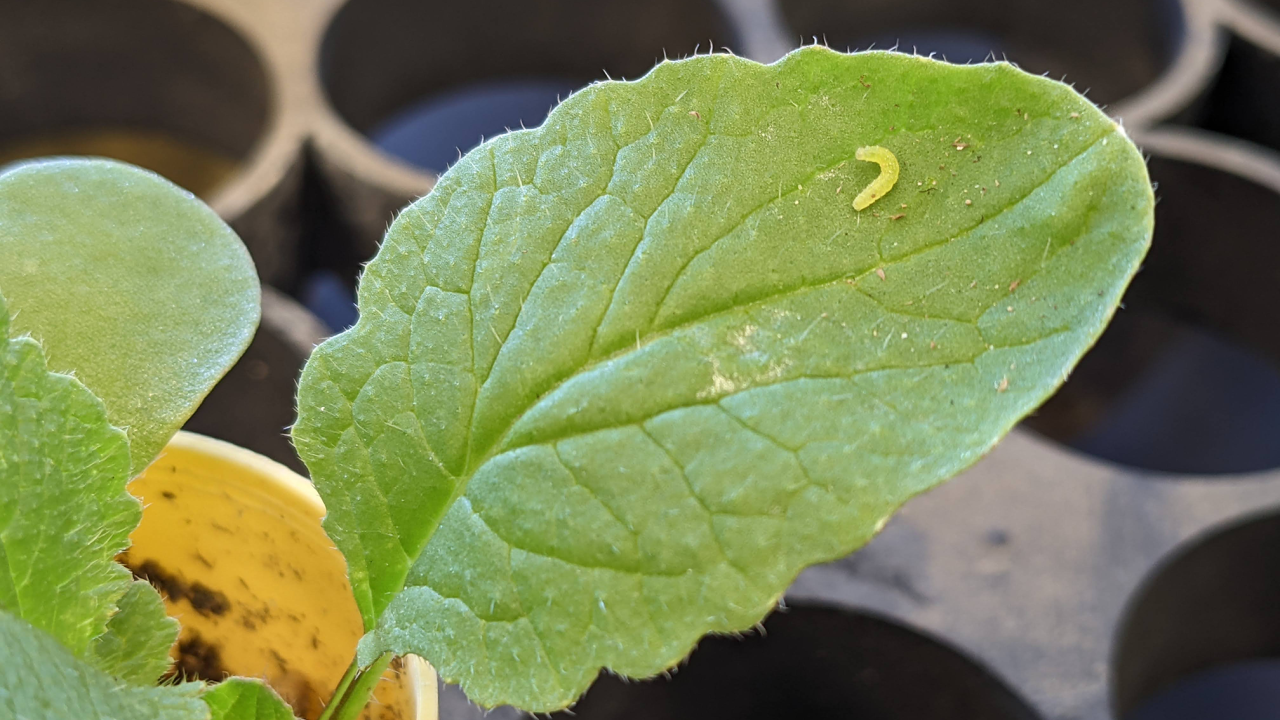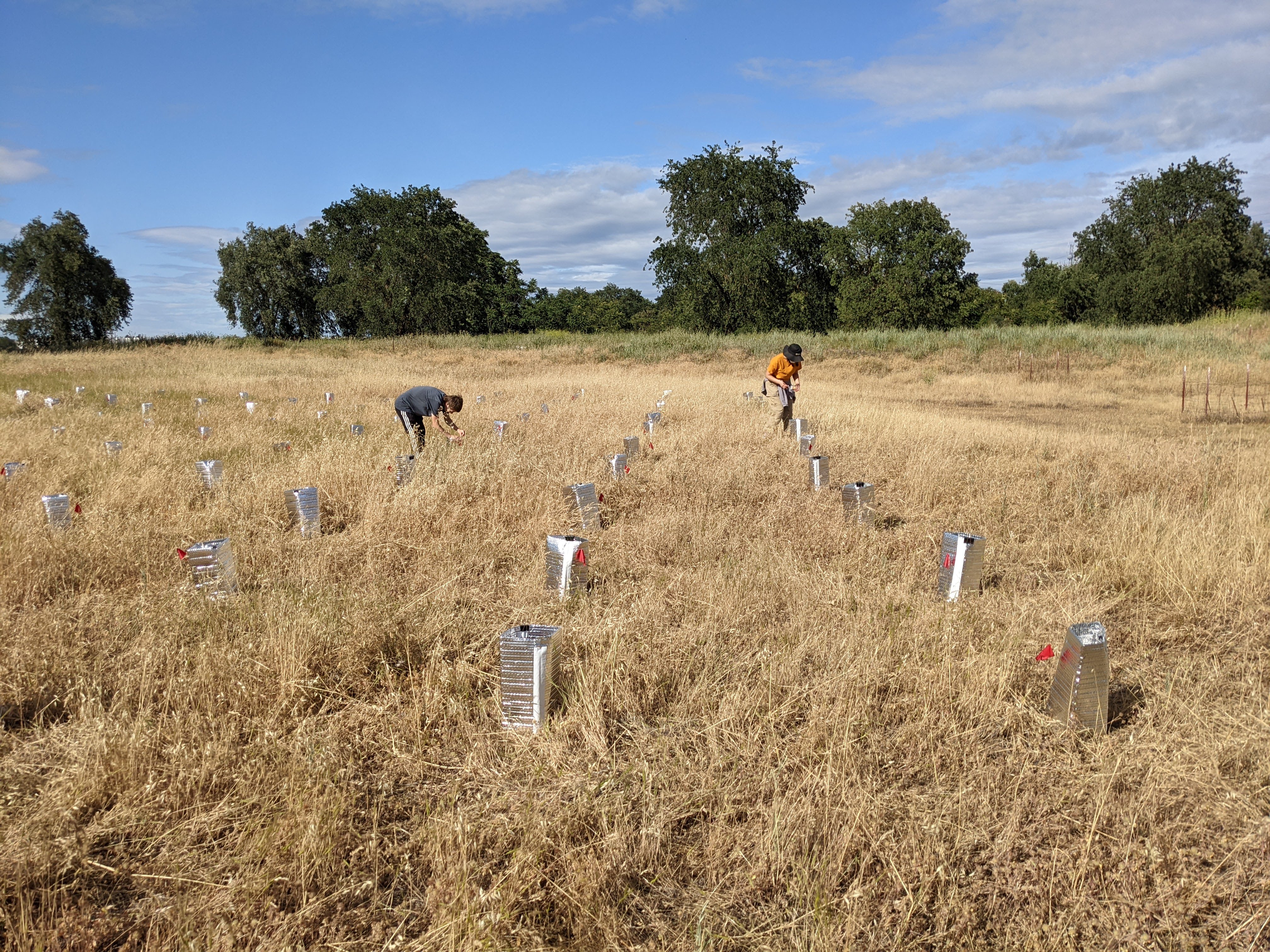
Caterpillar Growth, Feeding and Survival Patterns Shift Due to Warming Climate
Researchers Used Hand Warmers in the Field to Measure Warming Effects
As climate change drives up temperatures around the clock, warmer nights may be especially dangerous for caterpillars – causing them to grow fast but die young. University of California, Davis, researchers used hand warmers, a novel approach to warm field plots, to test the effects of higher temperatures at night. According to their study published in the journal Ecology, caterpillars exposed to these nighttime warmer conditions grew 29% faster on average, but many died before reaching the size needed to begin their transformation into butterflies.
Louie Yang, professor with the Department of Entomology and Nematology and lead author of the study, said warmer nights essentially remove a "cool down" period that caterpillars need to survive and develop properly.
“They eat a lot, they grow really fast, but they can't sustain it,” Yang said. “It seems likely that they died earlier because they didn’t have opportunities to cool down, repair thermal damage and slow down their metabolic activity at night. Changes in their behavior patterns might also have increased their risk of predation. And so, they had a kind of live fast, die young result.”
Researchers also found that when days and nights were warmed, virtually all caterpillar feeding, known as herbivory, occurred at night. On average, they found that 34% of caterpillar growth occurred at night, and this proportion increased dramatically when the insects were exposed to warmer day temperatures.
“Broadly, what we saw was that the caterpillar shifted their behavior, depending on different conditions during the day and night,” Yang explained. “In some cases, they essentially shifted almost all of their herbivory to the nighttime and essentially became nocturnal. When conditions were inhospitable during the day, they shifted to feeding almost entirely at night. We have not seen that before. That's a pretty interesting finding.”

Novel use of hand warmers
The experiment was designed and conducted by students enrolled in the two-quarter course, Experimental Ecology and Evolution in the Field, led by Yang. The 10 students in the class serve as co-authors on the study. During the winter and spring quarters of 2022, they set up 80 plots in a grassy field on campus near Putah Creek to measure the effects of day- and night-warming on cabbage white caterpillars and assessed how higher temperatures impacted their growth, development, behavior and survival.
To simulate the effects of climate change, researchers divided the plots into four treatment groups: no warming, day warming only, night warming only and both day and night warming. Researchers used low-cost, disposable hand warmers – the kind people typically tuck inside gloves – to gently raise temperatures around the caterpillars’ host plants. Yang said after much trial and error, their system worked.
“There are much more expensive ways to do this: You could use electrical heating cables, you could set up heat emitting lamps, but we wanted to figure out a way to do it on a limited budget and in a way that didn't require electricity or infrastructure,” Yang said. “These hand warmers worked really well.”
The researchers monitored the caterpillars and plants every day for two weeks. “The fact that we could do it at dawn and dusk meant that we could separately measure how much each caterpillar grew at night versus during the day,” Yang said. “That's a metric that we've never seen before.”
Fernanda Cohoon, a research technician at The Ohio State University, was among Yang’s students and checked on the plots frequently. She’d ride her bike to the field and make important observations.
“I noted whether the caterpillar was present or absent, and if it was present, I would measure it with calipers. I’d also note the percentage of herbivory,” she said. “It was one of the most wonderful experiences of my college career.”
Insects adapting to climate change
The cabbage white caterpillar is the larval stage of a small, pale butterfly commonly found across world. They feed primarily on cabbage, broccoli and kale plants and are well-studied, especially in agriculture. The research team chose it because its response to warming may reflect patterns seen in many other insects. Yang said that while they found insects can adapt to a changing climate, there are limits to how well they can adjust.
“We think that it's representative of a lot of other species, and that's important because we are increasingly finding evidence of problematic insect declines,” Yang said. “We hope that the things that we've learned about how this species is responding will allow us to understand more generally how insects may respond across the world, across many different kinds of insects.”
Elizabeth Postema, Heran Arefaine, Fernanda Cohoon, Emma Deen, Yvonne Durand, Gwendolyn Erdosh, Hailey Ma, Courtney Mausling, Sarah Solís and Madeline Wilson with UC Davis are also study authors.
This research was funded in part by a grant from the National Science Foundation.
Media Resources
- Louie Yang, Department of Entomology and Nematology, lhyang@ucdavis.edu
- Tiffany Dobbyn, College of Agricultural and Environmental Sciences, tadobbyn@ucdavis.edu